General Lincoln's Parquet Tea Caddy
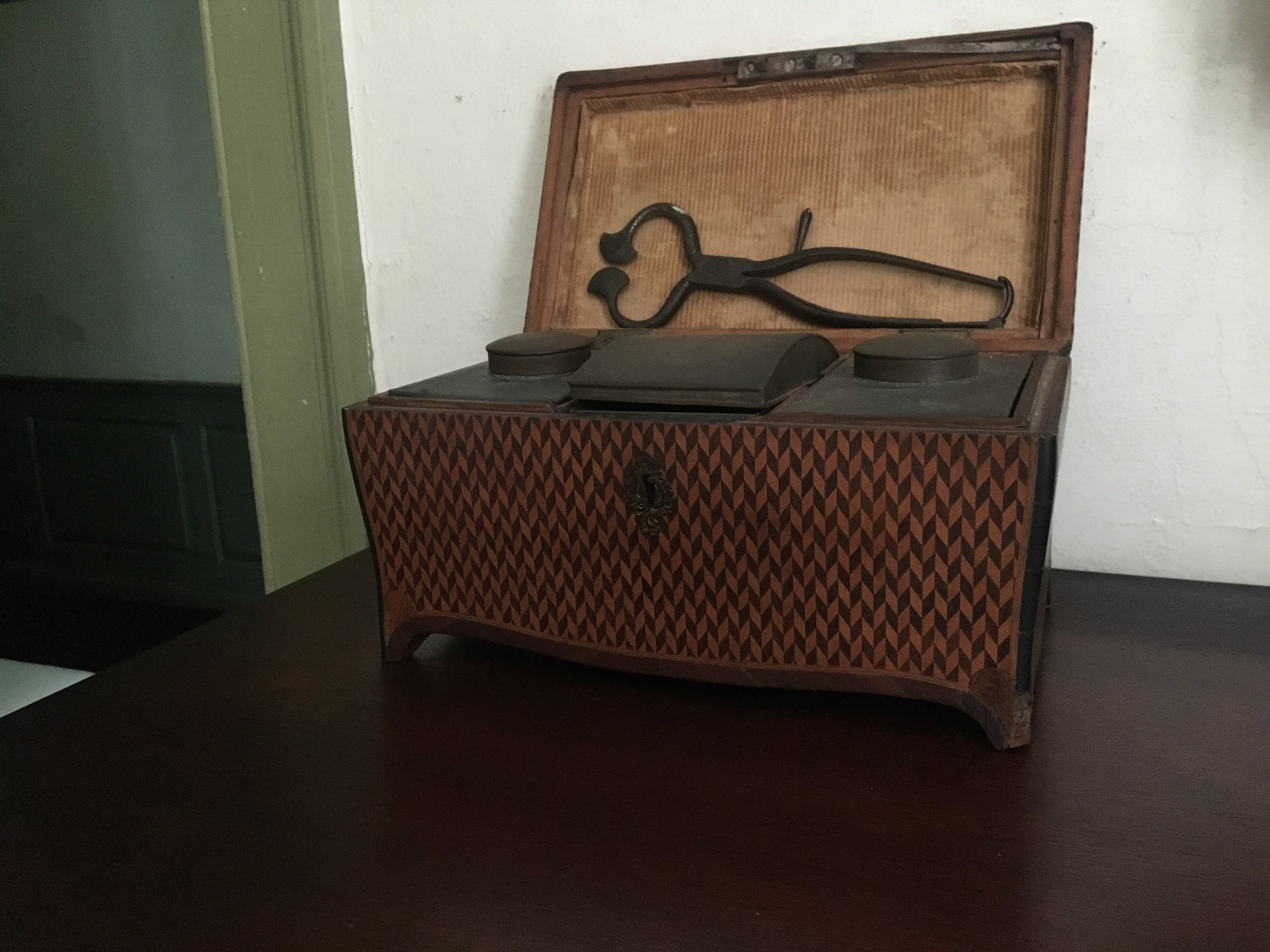
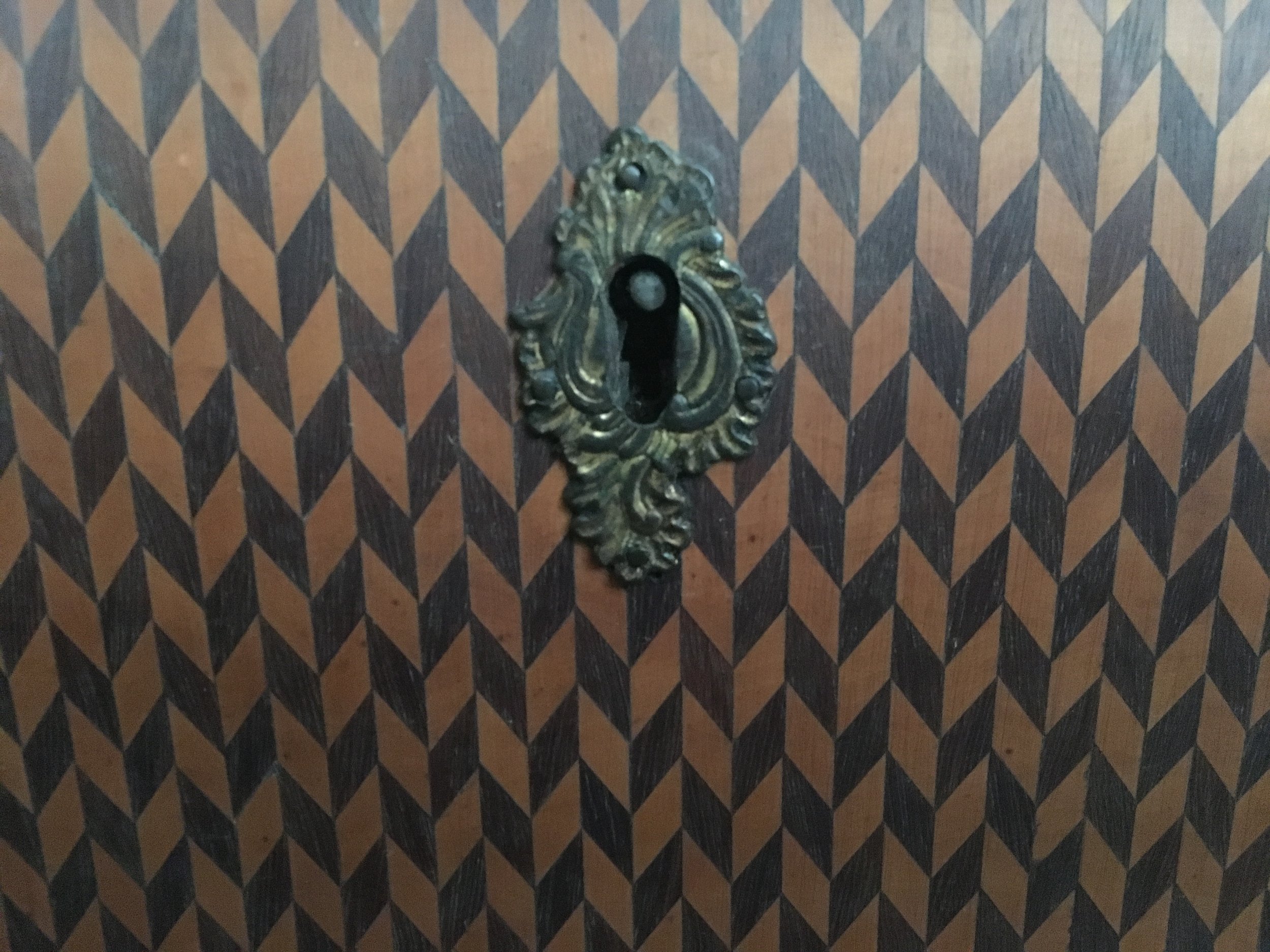
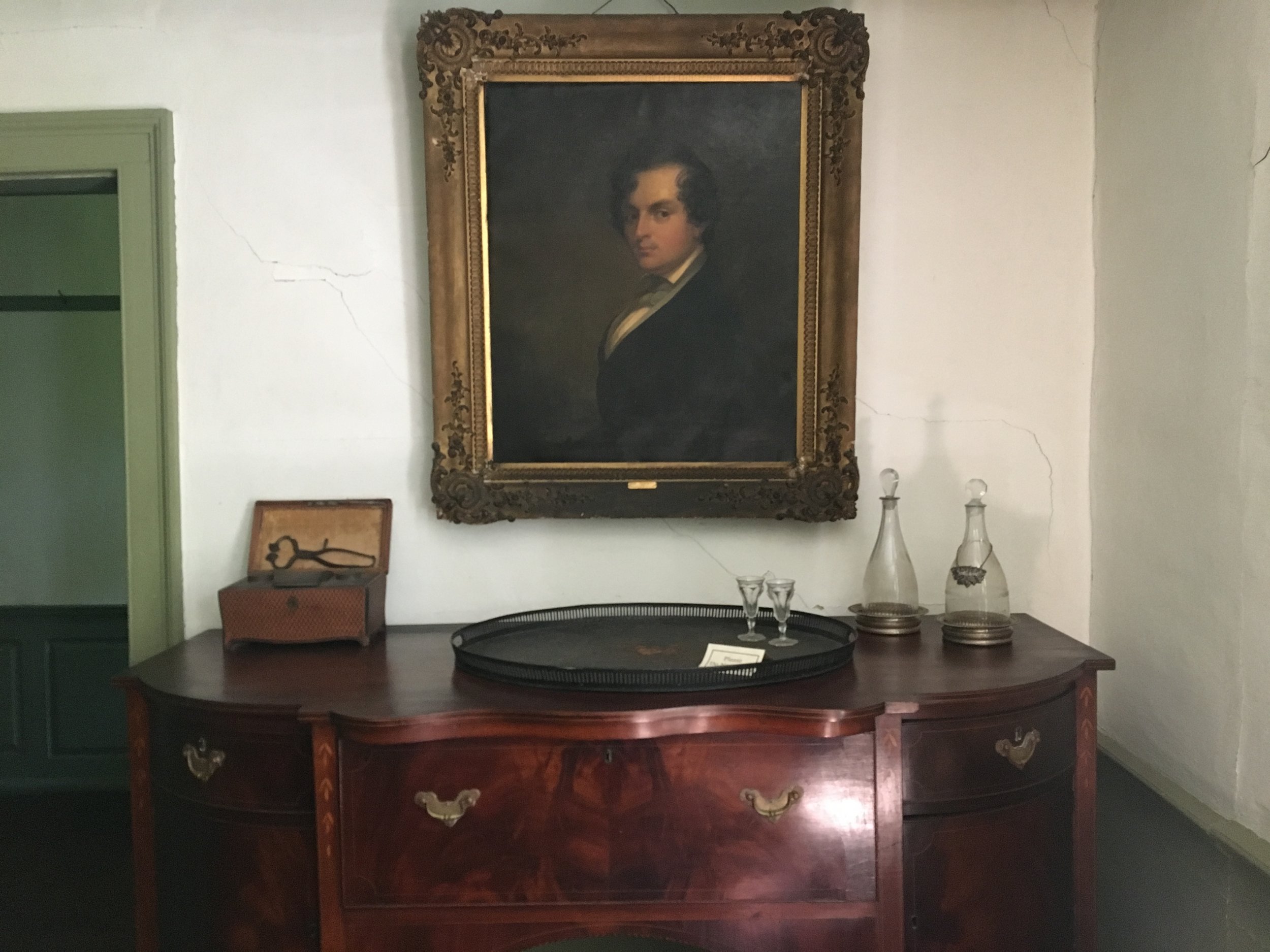
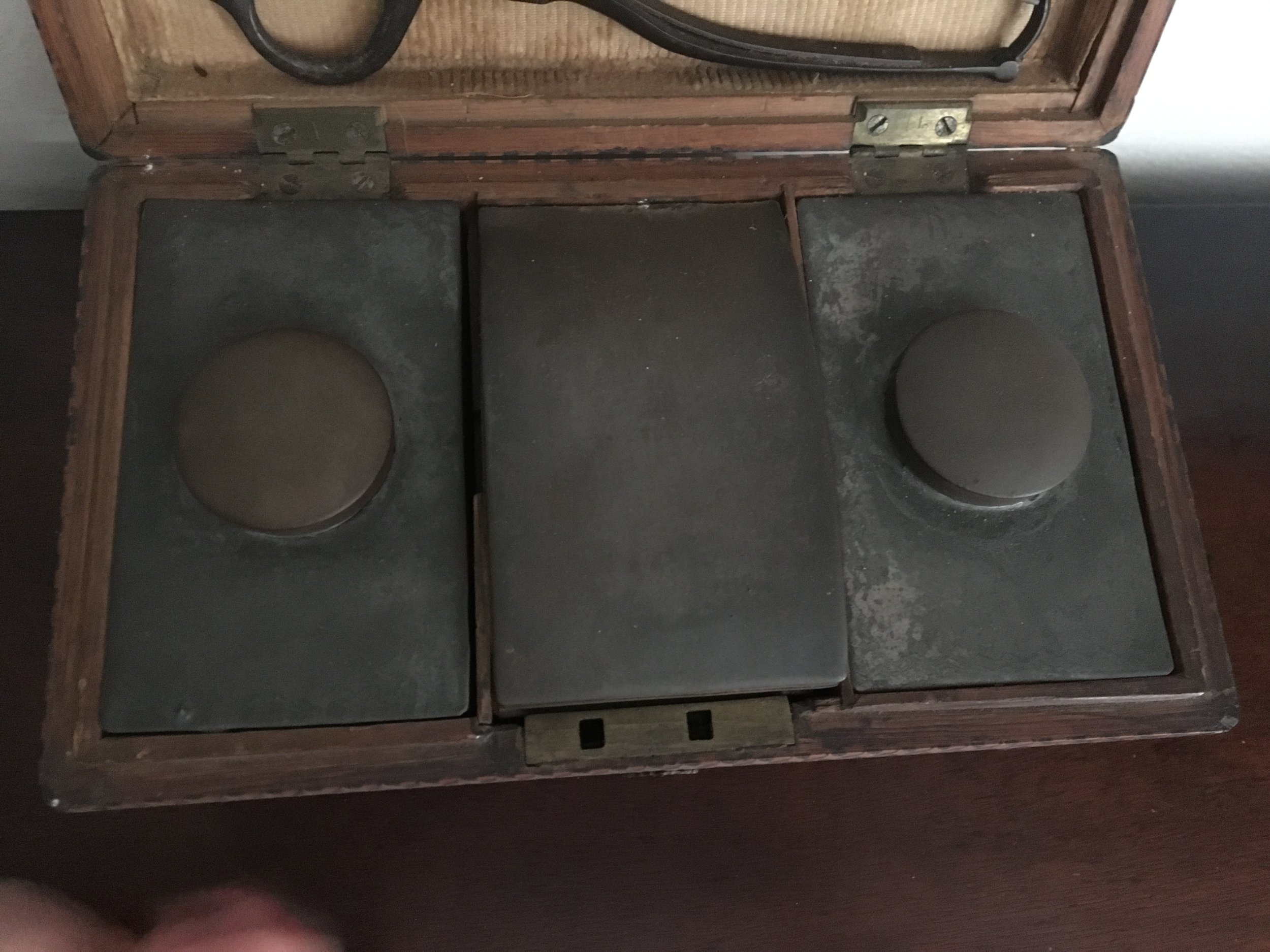
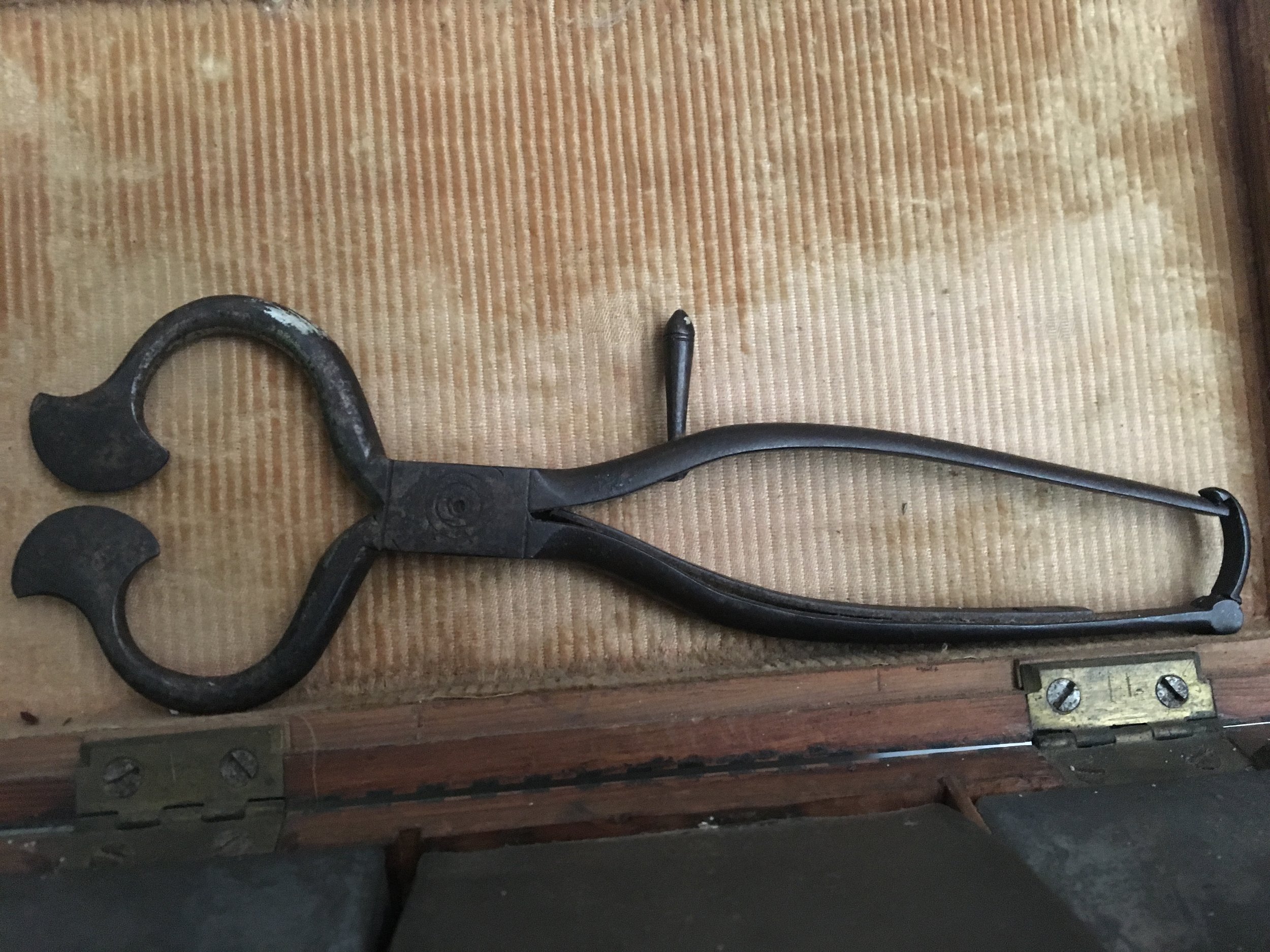
Tea has been a prominent custom since the mid-seventeenth century[1]. In the colonial era it developed as an important commodity, a political chess piece, and a symbol of prestige in society. The colonial tea table would not be complete without tea pots, teaspoons, lemon forks, infusers, sugar bowls, creamers, jam jars, saucers, and more. [2] All of these components and accessories were crucial to the tradition of tea, which was required for young colonists to become respected adults in society.
The British government began taxing tea in the 1760’s with the Stamp Act of 1765 and the Townshend Acts of 1767. These acts and the colonists’ reactions built up to a climax of smuggling and outrage, which developed into the Boston Tea Party in December of 1773. As a result of the agitation over the taxes, we became a nation of prominent coffee and chocolate drinkers.
Pictured here, is a tea caddy that belonged to General Benjamin Lincoln (1733-1810). The hand-made parquet wood box holds two tea tins and a middle tin for sugar cones. Previous to the invention of sugar cubes, sugar would come in small coned shapes. This explains the sugar tongs, placed above the tins in the photographs. The tongs were used to cut amounts of sugar from the cone and to place them in a hot cup of tea.
Caddies often came with the purchase of tea, but they came quite handy for those that travelled as much as General Lincoln. This caddy is most likely from England, who took the inspiration from Chinese canisters made of silver, ivory, lacquer, and tortoise shell.[3] The English typically made caddies from different types of wood (such as rosewood, satinwood, and mahogany) that were placed in elaborate or delicate designs.
William Cowper, an English poet and hymnodist, perfectly described the importance and the outlook of tea in his poem titled The Winter Evening as such: “the bubbling and loud-hissing urn / Throws up a steamy column, and the cups, / That cheer but not inebriate”.[4]
Sources:
[1] Tea has been a custom well before the seventeenth century, especially in the Eastern Hemisphere where most tea originates from. Due to the focus of this piece being of Europe, I mention the seventeenth century to reference the tradition in Europe and England.
[2] Dolores Snyder, Tea Time Entertaining: A Collection of Tea Themes & Recipes (Dolores W. Snyder, 2004), 26.
[3] Ibid., 33.
[4] https://www.poetryfoundation.org/poems/44037/the-task-book-iv-the-winter-evening